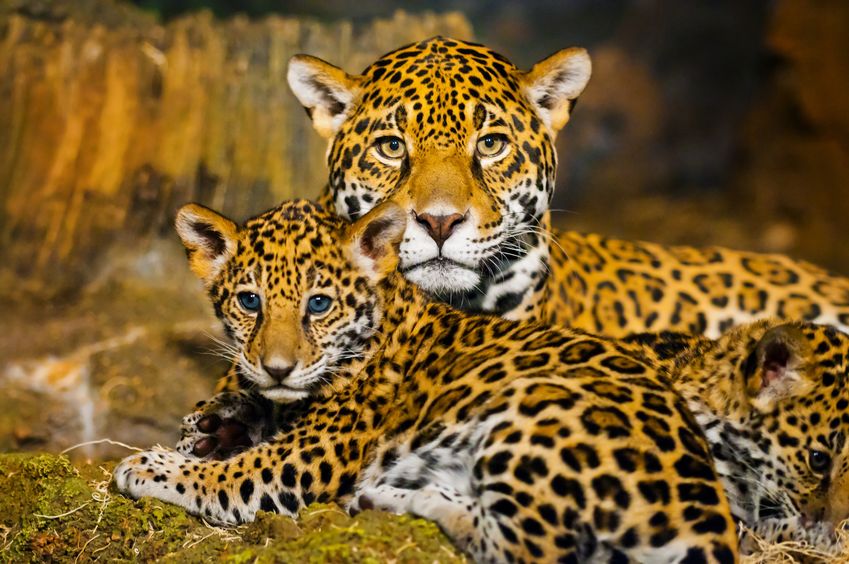The Skinny
There is good news on the environment front. People, governments and nonprofit organizations have helped make a positive impact with some endangered species, clearing the way for these once-troubled creatures to make a comeback. Some of these animals have even adapted without much help, helping ensure their own survival. Admittedly, the degree of comebacks have varied but they are all in better shape than they were years, if not decades ago. This all goes to show, teamwork can work and maybe save some animals, the planet and each other. Here are a few success stories.
The Slate
Climate change was taking a big toll on the simple starfish not long ago. Rising ocean temperatures has unleashed a pathogen that was killing off big numbers of starfish off the coast of North America. Positive change came quickly, however, as baby starfish seemingly developed a resistance to the virus that helped stabilize the populations.
America almost lost its national symbol, the bald eagle, thanks to the release of the chemical DDT. It got so bad that at one point it was believed that there were fewer than 500 nesting pairs alive in the lower 48 states. Growing awareness of the threat spurred changes, including banning DDT, which cleared the way for their rebound. Today, eagles are increasingly seen throughout the U.S. as thousands of pairs of nesting eagles are believed to be thriving south of Canada and Alaska.
Trumpeter swan was a popular bird in the 19th Century, in large part because it was tasty. It was so popular, in fact, it was almost eliminated from the U.S. by the mid 20th Century. Now North America’s largest native waterfowl is thriving again. In Minnesota alone, which had entirely lost these birds, close to 20,000 are alive in the wild.
The America gator has been kicking around in one form or another for millions of years. It was doing just fine, particularly in the southeastern United States, until demand for its hide drove it almost in extinction. Added to the endangered species list in 1967, strict conservation measures cleared its way to a healthy revival. Now fully recovered, more than 5 million gators are believed to be living in the southwest. Interestingly, the American alligator remains listed as threatened but only because they are so similar in appearance to the American crocodile, which are endangered.
Never say never—or gone for good. The black footed ferret, North America’s only indigenous ferret, was thought to be extinct by 1979 when a small wild colony was discovered in Wyoming in the early 1980s. Still endangered, the ferret population is at least rising and now with over 1,000 living wild, thanks to a focused breeding program.
Española Galapagos Giant Tortoises
Española Galapagos giant tortoises have come if not roaring back, then at least plodding back to their home island. Sixty years ago only 15 of these giants were left on Española because of overhunting and displacement by invasive species. Now, they are reproducing in the wild again.
After 25 years of hard conservation work, this little bird that is synonymous with New Zealand was taken off the endangered species list. Now, its population is growing by 2 percent a year.
Americans fell in love with buffaloes to the extent that they were almost being hunted into extinction. None other than President Theodore Roosevelt, an avid hunter, stepped in to help over a century ago by signing a law that cleared the way to purchase lands for bison conservation. Admittedly, there are no longer millions of buffalo roaming the plains as they did centuries ago, but there now are tens of thousands across the U.S., a huge comeback in the last century.
Jaguars are a beautiful and amazing creature that has fallen on hard times because its natural habitat has been decimated. Yet in the last 30 years, growing conservation efforts have helped stabilize its population, albeit in a more limited historic range in Central and South America. Jaguar populations have grown by an average of eight percent annually in certain regions and there are even signs that these cats may return to the southern U.S.
These horses were never domesticated, but their population was decimated due to human interference and lost habitat. Sadly, the last sighting of Przewalski’s horse in the wild was in the Gobi Desert of Mongolia in 1969. The breed, however, is rebounding now, if slowly. From a captive population of only 15 in the 1970s, more than 400 now roam wild today thanks to reintroduction programs in China, Kazakhstan and Mongolia. There are another 1,500 in captivity as well.
Eyes Up
Did we forget a great success story? Let us know at info@wellwellusa.com













